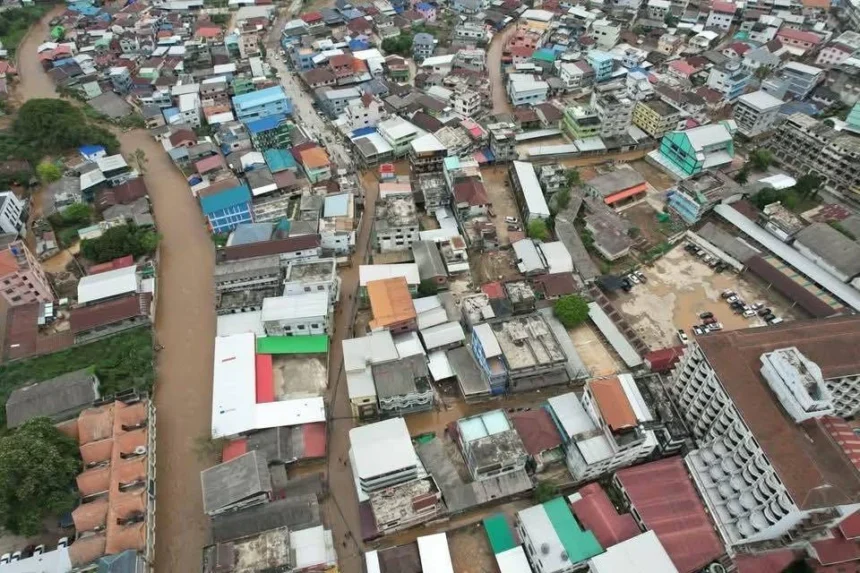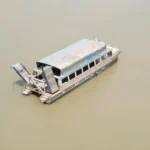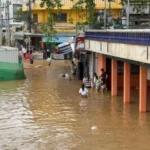Chiang Rai – Governor Charoen Thongsuk has called on residents who have built illegally along the Mae Sai River to remove their structures. If not, legal action will follow. The warning comes after heavy rain measuring just 69 millimetres led to flooding on both the Thai and Myanmar sides of the border.
Tuesday, steady rain in northern areas caused the Mae Sai River to overflow. Water entered communities in both Tachileik, Myanmar, and Mae Sai district in Chiang Rai. By the afternoon, the floodwaters began to recede. Local councils and relevant agencies started cleaning roads and affected spots once the water level dropped.
Military engineers and the Pha Muang Task Force placed large sandbags at key locations to prevent future overflows. Governor Charoen Thongsuk and his team surveyed the damage. They found it to be minor, thanks to the quick drop in water levels.
Governor Charoen explained that the main reason for the flooding was the rainfall in Myanmar, which reached 69 millimetres. Silt from previous floods also remained in the riverbed, causing water to rise faster than usual.
The army and other teams responded by placing sandbags along critical points. For a long-term fix, Thai authorities plan to dredge the river, starting from the Ko Chang subdistrict in Mae Sai.
Myanmar will handle dredging their section of the river. Both sides hope this work will reduce future floods.
The governor stressed the need to clear all buildings or structures that block the river. He has asked the district office to inform residents and encourage voluntary removal. The Royal Thai Army is working to reinforce the riverbanks and aims to finish this by 20 June 2025 to protect Mae Sai.
Right now, construction and river work are just beginning. So even a moderate amount of rain still leads to flooding.
Governor Charoen also mentioned that any remaining buildings not yet removed could cause cross-border boundary issues. He urged Mae Sai district officials, the Treasury Department, and others to explain the situation clearly to the property owners.
Meanwhile, Assoc. Prof. Chuchok Ayupong from Chiang Mai University’s Water Management Support Centre told reporters that the original river in Mae Sai was about 150 metres wide and quite shallow. Now, it’s only 20–30 metres wide.
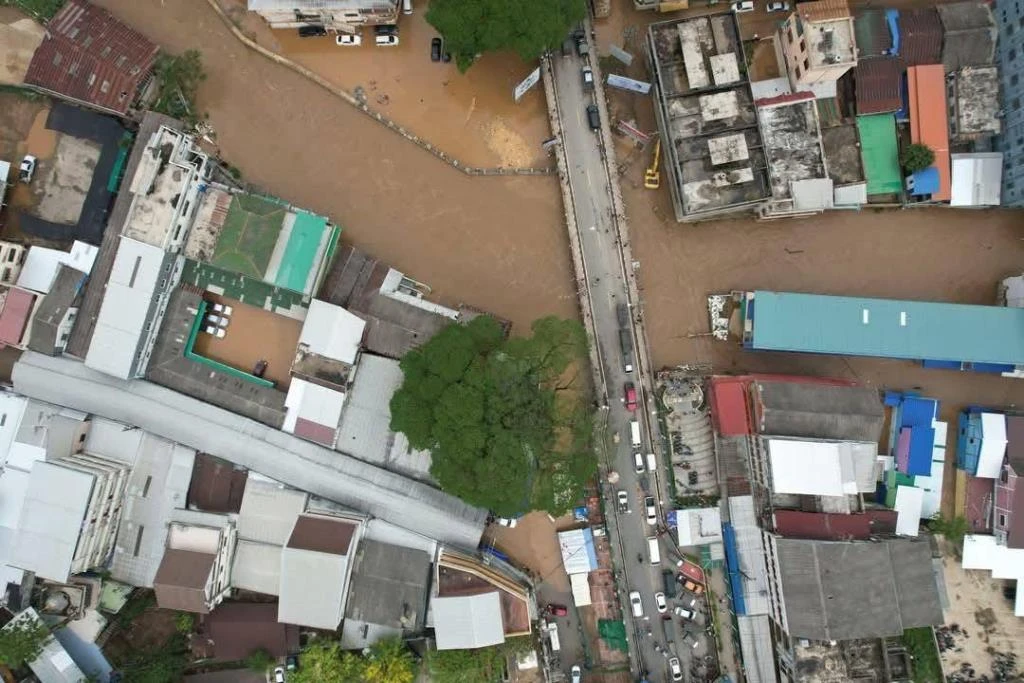
This makes the area much more likely to flood, especially around the Sa Lom Joy market, which sits in a high-risk zone. Both sides of the Sai River—Thailand and Tachileik, Myanmar—have built into the riverbed. This heavy encroachment is a big part of the problem.
To truly solve the flooding, experts say all the buildings that have pushed into the river area must be removed. The area would need to be cleared and turned into open space for water, known as a floodplain. This would mean relocating parts of both Mae Sai and Tachileik.
The buildings within 100 metres of the Sai River must go. The Department of Public Works has a long-term plan for this, but it will be expensive, he said.
Assoc. Prof. Chuchok said about 90% of the land within 100 metres of the river has no official land title. The old river area is now covered by the Sa Lom Joy market, which sits right in the flood zone.
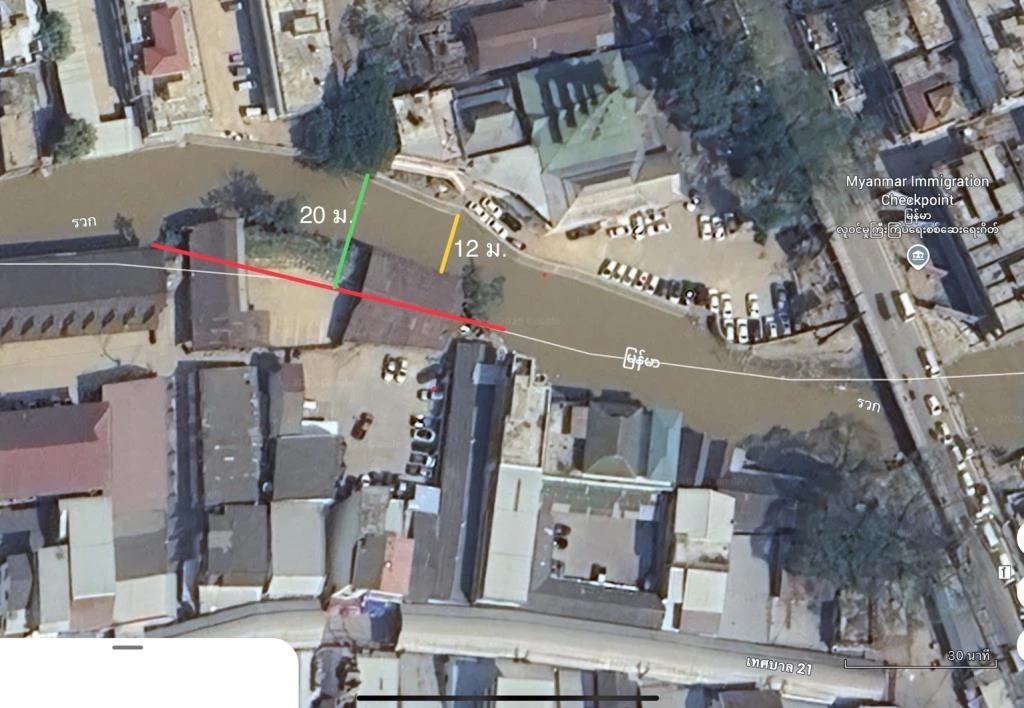
Dredging the river helps a little, but if heavy rain comes like last year, dredging and embankments won’t stop the floods. They’ll be just as bad as before. Right now, dredging only removes some silt, but since the water area has shrunk by about 70%, flooding is almost certain.
The National Water Resources Office is working on a plan to dredge both the Sai and Ruak rivers and build semi-permanent flood defences. The government has approved a budget of 748.6 million baht for this project, under a deal between Thailand and Myanmar.
Thailand has a plan to dredge 30.9 kilometres of the Ruak River, which started on 17 April 2025 and is set to finish by June. The Royal Thai Army Engineers will focus on three main areas:
- Temporary embankment at the second Friendship Bridge near Tachileik, Mae Sai District, Chiang Rai.
- Dredging the Ruak River at Ko Chang Subdistrict, Mae Sai District, Chiang Rai.
- Dredging the Ruak River at Ban Wang Lao, Wiang Subdistrict, Chiang Saen District, Chiang Rai.
All work is on track to finish before the rainy season, so the area is better prepared for future floods.
Related News:
Chiang Rai Improves Wiang Nong Lom for Future Eco-Tourism

Geoff Thomas is an award winning journalist known for his sharp insights and no-nonsense reporting style. Over the years he has worked for Reuters and the Canadian Press covering everything from political scandals to human interest stories. He brings a clear and direct approach to his work.




